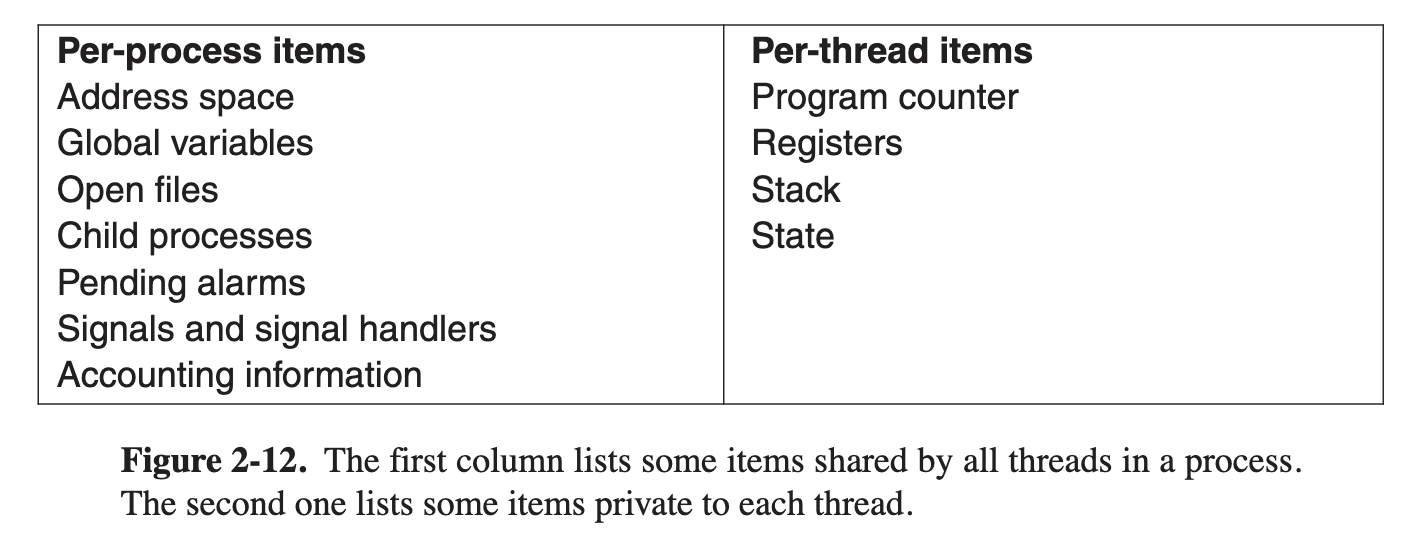Abstract
-
Responsible to carry out some features of a Process (进程)
-
Thread in a process share the same Address Space & other per-process items as shown below

-
There are 3 types
Benefits
Fast to Create/Destroy
- 10-100 times faster than Process (进程)
- Because without the need of Expensive Context Switching
Makes Programming Easier
- Different parts of program able to communicate without the use of Interrupts (中断) and Inter-Process Communication (IPC) etc
Better Responsiveness
- With Multi-threading, each Thread runs for a short while, to make all Threads seem running all the time
Powerpoint with Multiple Threads
An implementation of Multi-threading
- One thread can be used to receive inputs from users
- One thread can be used to format the slides
- One thread can be used to save the slides automatically on a regular interval
Benefits over Process
- Lighter to create and destroy compared to Process (进程), because it doesn’t require System Call (系统调用) to the underlying OS
- Share memory among themselves, avoid Memory Page Shifting which is expensive
Cons
No protection among threads
- One thread can bring down the entire Process (进程)
- One thread can read, write, or even wipe out another thread’s stack
Forking
- Should we copy over all the threads or just a single one?
Interrupt Handling
- For Signal (Software Interrupt) handling - which thread should handle it?
Terminologies
Blocking
- Thread doesn’t do anything while waiting for IO Operations or Network Operations etc
Non-blocking
- Thread carries out other tasks if the current tasks require it to wait for IO Operations or Network Operations etc
- Goes back to the current task when the waiting ends - Call back
- However, it still blocks when the task is CPU Bounded
Thread Table
- To keep track of the Thread in a Process (进程)
- Similar to Kernel’s Process Table, except that it keeps track only of the per-thread properties
- Managed by the Runtime System in User Thread & Kernel in Kernel Thread
